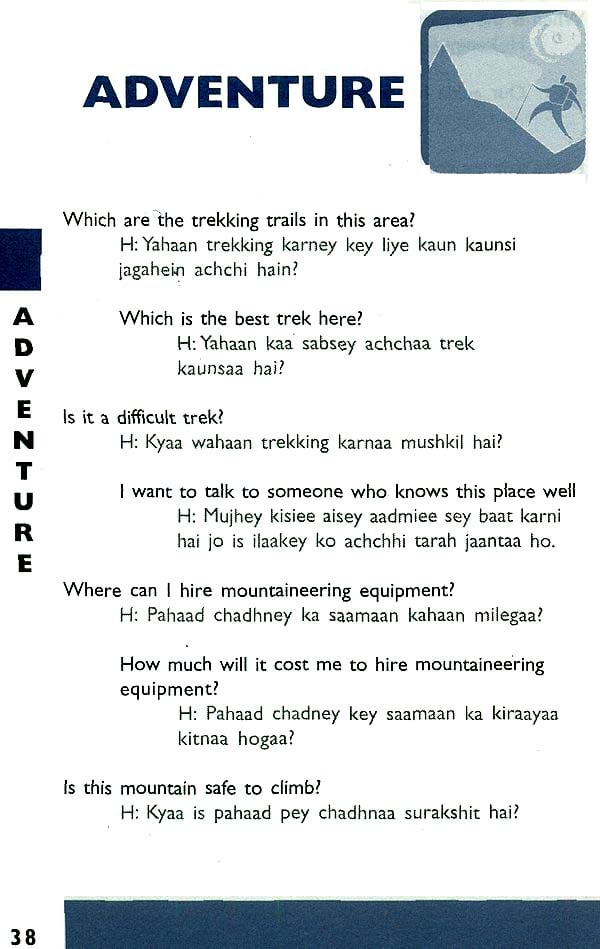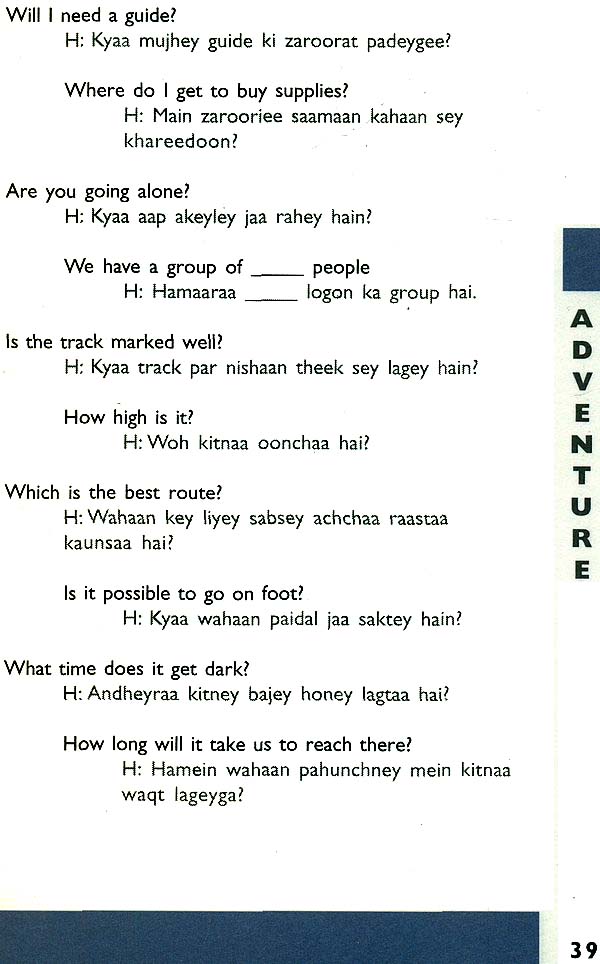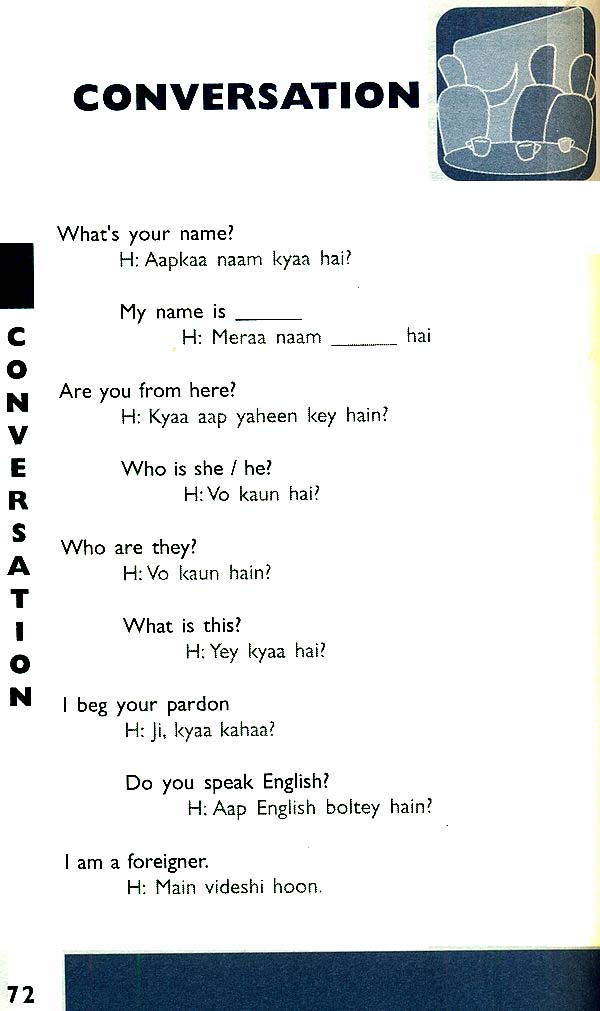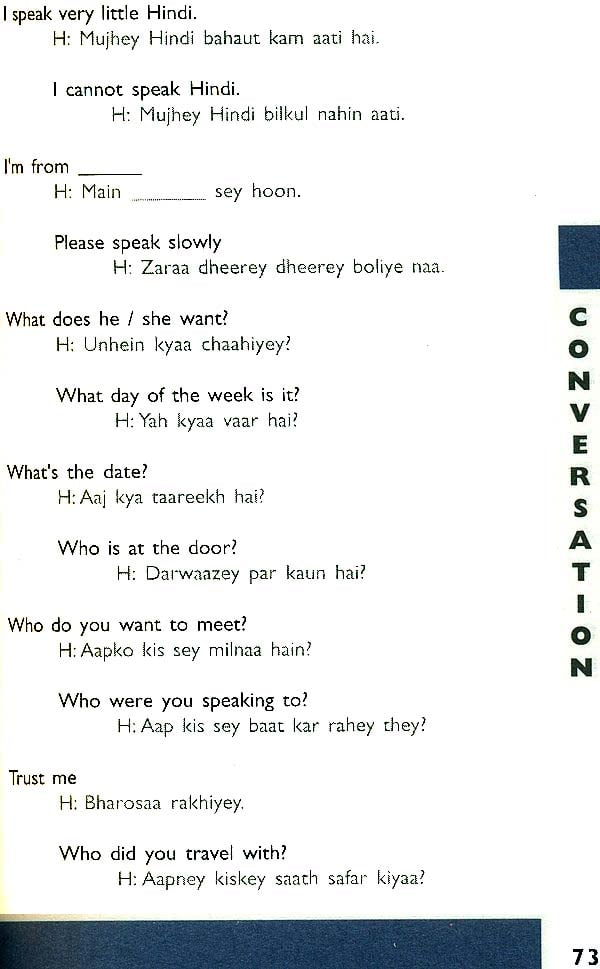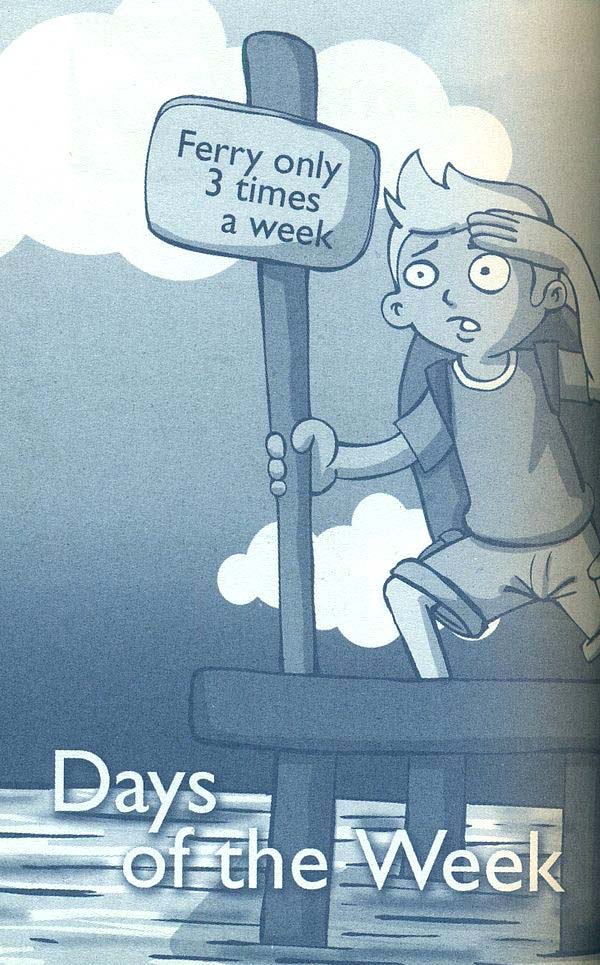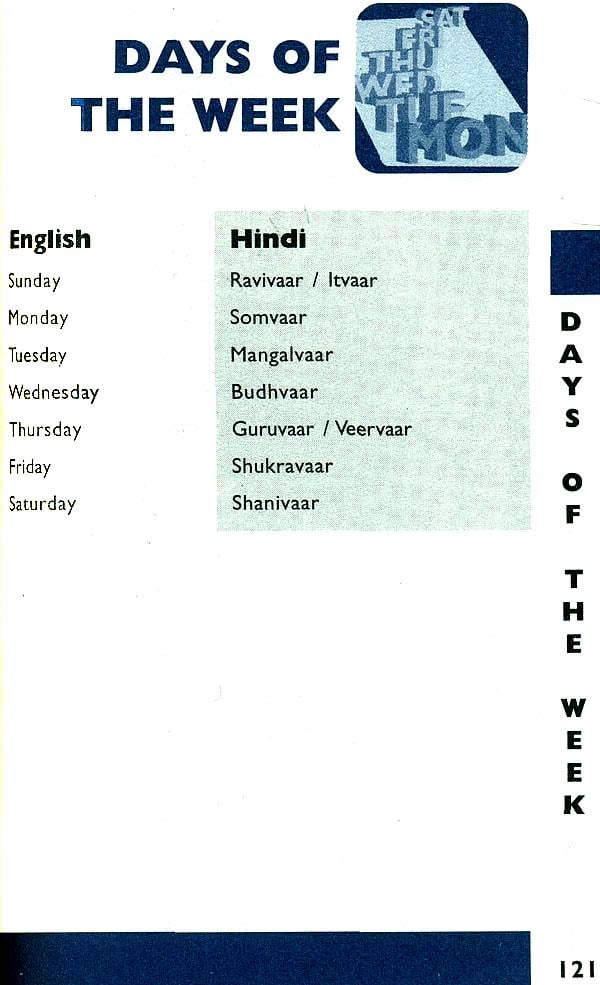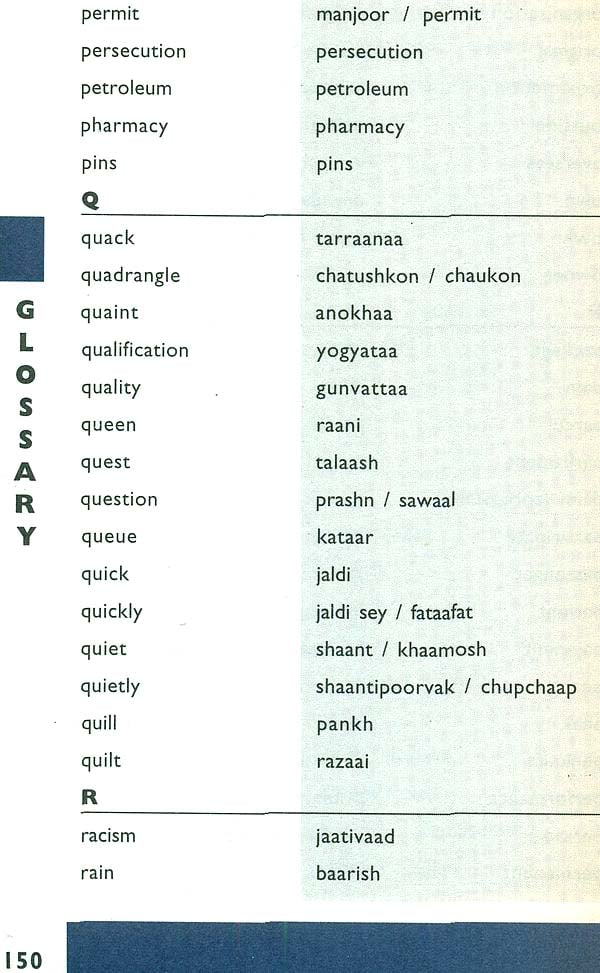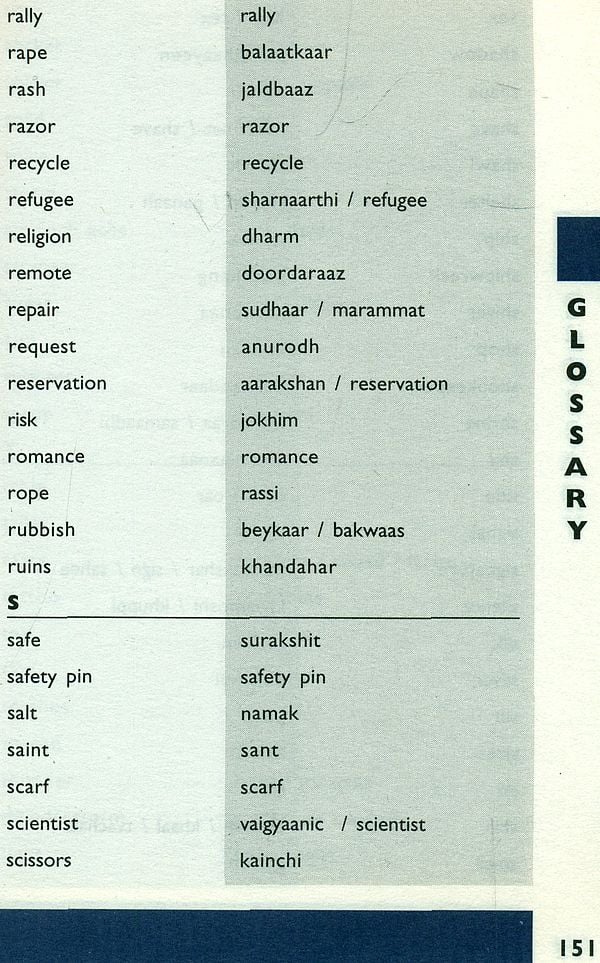
Connect Series (The Traveller’s Handy Phrase Book) English-Telugu
Book Specification
| Item Code: | NAE005 |
| Publisher: | Rupa.Co |
| Edition: | 2007 |
| ISBN: | 9788129110800 |
| Pages: | 158 |
| Cover: | Paperback |
| Other Details | 5.5 Inch X 4.0 Inch |
| Weight | 100 gm |
Book Description
If you are an English-speaking traveller visiting India, Connect! will prove to be an invaluable companion. You can now express yourself, get your queries clarified, tackle most situations- including really tricky ones. Designed as a handy pocket book, replete with icons and colour coded pages, you will find it easy to use and a ready-help. The diverse range of phrases and contexts will help you deal with most things that come your way.
So, set off to explore the charm and grandeur of the India & Nepal and communicate with Connect! With Connect! your trip will be a cake walk.
Telugu, spoken in the south Indian state of Andhra Pradesh, is one of the twenty-two official languages of India. It is the second most widely spoken language in the country after I Hindi. The origins of Telugu are still somewhat unclear, though the Andhras-the Telugu speaking people-are mentioned in texts dating back to 700BC.
To an untrained eye the Telugu script looks very much like the Kannada-the language of neighbouring Karnataka state- though the spoken languages are dissimilar. Telugu is heavily influenced by Sanskrit and as with many Indian languages one finds words from Persian, Arabic and English too.
The first noteworthy example of Telugu literature is Nannayabhatta's translation of the famous Sanskrit epic, Mahabharata, in 1020 AD. He was unable to finish the job though-in fact it took three poets to finish the task by which time it was the fourteenth century. It was about this time that original writing in Telugu began. Much of it was flowery overblown poetry but in the following centuries the literary form flourished as Telugu writers busied themselves with prose, drama and music compositions. In fact, much of South Indian classical music is based on the Telugu compositions of a 19th century saint called Tyagaraja.
Variations and dialects of Telugu are spoken all over Andhra Pradesh. The Connect Phrasebook has a standardised version comprehensible to all speakers of the language.
Cultural Influences in Andhra Pradesh
Historical references to the Andhras go back to 322 BC. The region was under a dynasty called Satavahana from around 230 BC. The remarkable rule lasted over 450 years but eventually came to an end sometime in the 2nd century AD. After a period of uncertainty during which local chieftains squabbled for control, there was a return to stability but over the next few hundred years the kingdom changed hands and passed on from one influential dynasty to another.
By the 12th century Telugu carved out an identity for itself, distinct from Kannada, Prakrit (a spoken form of Sanskrit) or Sanskrit. The greatest contribution to the development of the local language came from rulers called Kakatiya. They were avid Telugu speakers and encouraged literature and art. The last great Hindu ruler of Andhra was Krishna Deva Raya of the Vijayanagara.
In 1323 Andhra fell to the Delhi Sultanate and Islam came to stay. With the exception of a period of fifteen years when the region was under the supremacy of the Vijayanagara dynasty of the south, the following centuries saw a succession of Islamic rulers and eventually, like most of India, in 1687 Andhra too became part of the sprawling Mughal Empire. Emperor Aurangazeb deputed governors called Nizam to rule over the territory. But after a little over three decades of Nizam rule Andhra became a subject of dispute between two colonial powers, the French and the British. The latter went on to wrest a sizeable portion of the kingdom, though the Nizam continued to wield control over Hyderabad-the modern-day capital of Andhra Pradesh. The rest of the state became part of Madras Presidency.
In 1948, the princely state of Hyderabad ceded to India. In 1958 Andhra Pradesh set a precedent by becoming the first state in India to be divided on linguistic lines.
Popular Culture
Telugu is considered a sweet language, mellifluous and pleasing to the ear. There are differences between the spoken and written form, though literary Telugu has become more accessible in recent years. Dialects of the language are many and in Hyderabad you get to hear an amalgam of Hindi, Urdu, Telugu, Gujarati, Marathi and Kannada called Dakhini.
The Telugu film industry is a prolific producer of pulp-fiction movies that thrill the masses no end. In a typical film larger than life heroes battle evil villains and romance nubile beauties in three-hour extravaganzas. The song and dance sequences are lavishly picturised and it is not unusual to find the more influential Hindi film industry borrow ideas from these mind- boggling trendsetters.
Though the film industry is all brawn, daily TV soaps are tailored to 'feminine' tastes where both heroes and villains tend to be women.
| Let's Connect | 5 |
| Phrases | |
| Travel & transport | 8 |
| Airport | 9 |
| Train | 11 |
| Road | 13 |
| Boat/ ferry | 16 |
| Accommodation | 17 |
| Food | 22 |
| Fruits | 26 |
| Vegetables | 27 |
| Dry fruits | 28 |
| Getting around | 29 |
| Sightseeing | 30 |
| Hiring guide | 32 |
| Travel talk | 33 |
| Tourist information | 35 |
| Adventure | 38 |
| Culture | 44 |
| Shopping | 48 |
| Money | 52 |
| Communication services | 56 |
| Telephone | 57 |
| Internet | 60 |
| Post office | 61 |
| Meeting people | 63 |
| Socialising | 64 |
| Conversation | 72 |
| Meeting children | 83 |
| Emergency | 85 |
| Health | 89 |
| Photography | 96 |
| Useful words | |
| Pronouns | 98 |
| Greetings | 100 |
| Relations | 103 |
| Directions | 106 |
| Body Parts | 108 |
| Adjectives | 111 |
| Colours | 116 |
| Weather | 118 |
| Days of the week | 120 |
| Months of the year | 122 |
| Seasons | 124 |
| Numbers | 126 |
| Time | 129 |
| Geographical terms | 132 |
| Necessities | 134 |
| Glossary | 136 |
